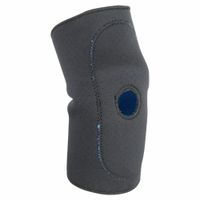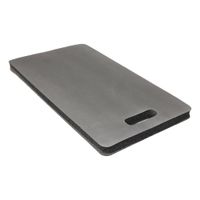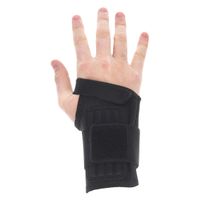Call +(254) 703 030 000 / 751 483 999 / 721 704 777
.....Read More
Frequently Asked Questions
What are the benefits of using ergonomic products?
Ergonomic products are designed to optimize human well-being and overall system performance by fitting the product to the user, rather than forcing the user to adapt to the product. The benefits of using ergonomic products are numerous and impactful:
1. **Reduced Risk of Injury**: Ergonomic products help minimize the risk of musculoskeletal disorders (MSDs) such as carpal tunnel syndrome, tendonitis, and back pain by promoting proper posture and reducing strain on the body.
2. **Increased Comfort**: These products are designed to provide maximum comfort, reducing fatigue and discomfort during prolonged use. This is particularly beneficial in work environments where individuals spend long hours at desks or using computers.
3. **Enhanced Productivity**: By reducing discomfort and the risk of injury, ergonomic products can lead to increased productivity. Employees are able to focus better and work more efficiently when they are not distracted by pain or discomfort.
4. **Improved Posture**: Ergonomic chairs, desks, and accessories encourage proper alignment of the spine and joints, which can lead to better posture over time. This not only reduces pain but also contributes to overall health and well-being.
5. **Customization and Flexibility**: Many ergonomic products are adjustable, allowing users to customize them to their specific needs. This flexibility ensures that the product can accommodate a wide range of body types and preferences.
6. **Long-term Health Benefits**: Consistent use of ergonomic products can lead to long-term health benefits, including reduced risk of chronic pain and improved physical health, which can contribute to a better quality of life.
7. **Cost Savings**: While ergonomic products may have a higher upfront cost, they can lead to cost savings in the long run by reducing healthcare expenses related to work-related injuries and increasing employee productivity.
Overall, ergonomic products are a valuable investment for both individuals and organizations aiming to enhance comfort, health, and efficiency.
How do kneeling pads help in manual labor?
Kneeling pads are essential tools in manual labor, providing several benefits that enhance comfort, safety, and productivity. These pads are designed to cushion the knees, reducing the pressure and strain that can occur when kneeling on hard surfaces for extended periods. This cushioning effect helps prevent knee pain and long-term joint damage, which is crucial for workers who spend significant time in kneeling positions, such as gardeners, construction workers, and floor installers.
The ergonomic design of kneeling pads distributes body weight evenly across the knees, minimizing the risk of developing conditions like bursitis or arthritis. By alleviating discomfort, these pads enable workers to maintain focus and efficiency, reducing the need for frequent breaks due to pain or fatigue. This can lead to increased productivity and a more comfortable working environment.
Kneeling pads also offer protection against environmental hazards. They act as a barrier between the knees and potentially harmful surfaces, such as rough concrete, sharp debris, or wet and cold ground. This protective layer helps prevent cuts, bruises, and exposure to moisture, which can lead to skin irritation or infections.
Additionally, many kneeling pads are made from durable, water-resistant materials that are easy to clean and maintain, ensuring longevity and hygiene. Some models feature non-slip surfaces, providing stability and reducing the risk of slipping or falling, which is particularly important in wet or uneven work areas.
In summary, kneeling pads are vital for manual laborers, offering comfort, protection, and support. They help prevent injuries, enhance productivity, and contribute to a safer and more efficient work environment.
What features should I look for in elbow supports?
When selecting elbow supports, consider the following features:
1. **Material**: Look for breathable, moisture-wicking materials like neoprene or spandex that provide comfort and prevent skin irritation.
2. **Compression Level**: Choose supports that offer adequate compression to enhance blood circulation and reduce swelling without restricting movement.
3. **Adjustability**: Opt for supports with adjustable straps or closures to ensure a snug fit and accommodate different levels of support as needed.
4. **Size and Fit**: Ensure the support is available in various sizes and provides a proper fit to avoid slipping or excessive tightness.
5. **Flexibility and Range of Motion**: The support should allow for a full range of motion while providing stability to the elbow joint.
6. **Support Type**: Decide between sleeves, braces, or straps based on the level of support required. Sleeves offer mild support, braces provide moderate to high support, and straps target specific areas.
7. **Durability**: Check for high-quality stitching and materials that can withstand regular use and washing.
8. **Ease of Use**: Consider how easy it is to put on and take off the support, especially if you need to adjust it frequently.
9. **Breathability**: Look for designs with ventilation features to keep the skin cool and dry.
10. **Pain Relief Features**: Some supports include gel pads or additional cushioning for targeted pain relief.
11. **Aesthetic and Design**: Choose a design that suits your personal style and comfort preferences.
12. **Purpose-Specific Features**: If you need support for specific activities like sports, look for features tailored to those needs, such as reinforced areas for impact protection.
13. **Cost and Brand Reputation**: Consider the price and choose reputable brands known for quality and customer satisfaction.
How can knee supports prevent injuries?
Knee supports can prevent injuries by providing stability, reducing stress, and enhancing proprioception. They stabilize the knee joint, limiting excessive movement that could lead to ligament tears or strains. By compressing the area, knee supports help in maintaining proper alignment and distributing forces evenly across the joint, which reduces the risk of overloading specific structures like the ligaments or cartilage.
The compression from knee supports also aids in reducing swelling and inflammation, which can occur from minor injuries or overuse. This can prevent further damage by allowing the knee to heal more effectively. Additionally, knee supports can help in maintaining warmth around the joint, which keeps the muscles and ligaments more flexible and less prone to injury.
Knee supports enhance proprioception, which is the body's ability to sense its position in space. This heightened awareness can improve balance and coordination, reducing the likelihood of awkward movements that could lead to injury. For athletes or individuals engaging in high-impact activities, knee supports can serve as a psychological aid, boosting confidence and allowing them to perform without fear of injury.
Moreover, knee supports can be particularly beneficial for individuals with previous knee injuries or chronic conditions like arthritis. They provide additional support to weakened structures, reducing the risk of re-injury. By offering a combination of mechanical support, compression, and proprioceptive feedback, knee supports play a crucial role in injury prevention, especially during physical activities that place significant stress on the knee joint.
What is the importance of ankle supports in repetitive use situations?
Ankle supports play a crucial role in repetitive use situations by providing stability, reducing the risk of injury, and enhancing performance. In activities that involve frequent ankle movement, such as running, jumping, or playing sports, the repetitive stress can lead to overuse injuries like sprains, strains, or tendinitis. Ankle supports help mitigate these risks by offering external stabilization to the joint, which limits excessive movement and helps maintain proper alignment.
By compressing the area, ankle supports can also improve proprioception, which is the body's ability to sense its position in space. Enhanced proprioception aids in better balance and coordination, reducing the likelihood of missteps that could lead to injury. This is particularly beneficial in sports or activities that require quick changes in direction or uneven surfaces.
Moreover, ankle supports can help manage existing injuries by providing the necessary support to allow for healing while still enabling some level of activity. They can reduce swelling and pain through compression, which can be particularly beneficial in managing chronic conditions like arthritis or tendinitis.
In addition to injury prevention and management, ankle supports can enhance athletic performance by allowing individuals to engage in activities with greater confidence and reduced fear of injury. This psychological benefit can lead to improved focus and performance.
Overall, ankle supports are an essential tool in repetitive use situations, offering both physical and psychological benefits that contribute to injury prevention, recovery, and enhanced performance.
How do back supports improve posture?
Back supports improve posture by providing external support to the spine, encouraging proper alignment and reducing strain on muscles and ligaments. They help maintain the natural curvature of the spine, which is essential for good posture. By stabilizing the lower back, these supports prevent slouching and promote an upright position, reducing the tendency to hunch over.
Back supports distribute weight evenly across the back, alleviating pressure points and reducing the risk of developing musculoskeletal issues. They also serve as a physical reminder to maintain correct posture, as the presence of the support makes users more conscious of their body positioning.
For individuals with existing back pain or postural issues, back supports can offer relief by minimizing movements that exacerbate discomfort. They can also aid in the rehabilitation process by providing the necessary support to weakened muscles, allowing them to heal and strengthen over time.
In workplace settings, especially for those who sit for prolonged periods, back supports can mitigate the negative effects of sedentary behavior by promoting a healthier sitting posture. This can lead to increased comfort and productivity, as well as a reduction in fatigue and discomfort associated with poor posture.
Overall, back supports act as an adjunct to proper ergonomic practices and exercises aimed at strengthening core muscles, which are crucial for maintaining long-term postural health.
Are ergonomic products effective in reducing fatigue?
Yes, ergonomic products are generally effective in reducing fatigue. Ergonomic products are designed to optimize human well-being and overall system performance by minimizing physical strain and discomfort. These products, such as ergonomic chairs, keyboards, and desks, are tailored to support the natural posture and movements of the human body, thereby reducing the risk of musculoskeletal disorders and fatigue.
Ergonomic chairs, for instance, provide lumbar support, adjustable seat height, and armrests, which help maintain proper posture and reduce strain on the back and neck. This support can prevent the onset of fatigue by ensuring that the body is not in a constant state of tension or discomfort. Similarly, ergonomic keyboards and mice are designed to minimize wrist strain and promote a neutral hand position, reducing the risk of repetitive strain injuries and associated fatigue.
Moreover, ergonomic desks that allow for sit-stand options enable users to alternate between sitting and standing positions, promoting better circulation and reducing the fatigue associated with prolonged static postures. By encouraging movement and flexibility, these products help maintain energy levels and reduce the physical and mental fatigue that can result from extended periods of sedentary work.
In addition to physical benefits, ergonomic products can also enhance productivity and mental well-being. By reducing discomfort and fatigue, individuals can focus better on their tasks, leading to improved efficiency and job satisfaction. Overall, the use of ergonomic products is a proactive approach to creating a healthier and more comfortable work environment, ultimately reducing fatigue and enhancing overall well-being.
What materials are best for ergonomic supports?
The best materials for ergonomic supports are those that provide comfort, durability, and adaptability to the user's body. Memory foam is highly regarded for its ability to conform to the body's shape, offering personalized support and reducing pressure points. It is commonly used in ergonomic chairs, cushions, and mattresses. Gel-infused memory foam enhances this by providing cooling properties, which is beneficial for prolonged use.
High-density polyurethane foam is another popular choice due to its durability and support. It is often used in seat cushions and back supports, providing a firm yet comfortable base that maintains its shape over time.
Mesh materials are ideal for ergonomic chairs, offering breathability and flexibility. They allow air circulation, keeping the user cool, and adapt to the body's contours, providing consistent support.
For wrist supports and mouse pads, silicone gel is preferred for its soft, cushioning effect and ability to reduce strain on the wrists. It is durable and easy to clean, making it suitable for daily use.
Natural materials like latex are also used for their hypoallergenic properties and resilience. Latex provides firm support and is often used in mattresses and cushions for those with allergies.
In addition, adjustable and modular materials, such as those used in ergonomic keyboards and desks, allow for customization to fit individual needs, promoting better posture and reducing strain.
Overall, the best materials for ergonomic supports are those that combine comfort, support, and adaptability, tailored to the specific needs of the user and the environment in which they are used.
How do I choose the right size for ergonomic supports?
To choose the right size for ergonomic supports, follow these steps:
1. **Identify the Type of Support Needed**: Determine whether you need ergonomic supports for your back, wrists, feet, or another body part. Each type has specific sizing considerations.
2. **Measure Your Body**: Use a measuring tape to take accurate measurements of the area needing support. For back supports, measure your waist and torso length. For wrist supports, measure the circumference of your wrist. For foot supports, know your shoe size and foot arch type.
3. **Consult Sizing Charts**: Manufacturers provide sizing charts for their products. Compare your measurements to these charts to find the appropriate size. Pay attention to any specific instructions or notes provided by the manufacturer.
4. **Consider Adjustability**: Some ergonomic supports come with adjustable features, such as straps or Velcro, allowing for a more customized fit. If you are between sizes, opt for an adjustable option.
5. **Read Reviews and Recommendations**: Look for user reviews and expert recommendations to understand how the product fits in real-world scenarios. This can provide insights into whether the product runs true to size or if adjustments are necessary.
6. **Test the Product**: If possible, try the product in-store or purchase from a retailer with a good return policy. Ensure the support feels comfortable and does not restrict movement.
7. **Consult a Professional**: For specialized ergonomic supports, such as those for medical conditions, consult a healthcare professional or ergonomic specialist to ensure the correct fit and support level.
8. **Re-evaluate Over Time**: As your body changes, periodically reassess the fit of your ergonomic supports to ensure they continue to provide optimal comfort and support.
Can ergonomic products help with existing joint pain?
Yes, ergonomic products can help alleviate existing joint pain by promoting better posture, reducing strain, and minimizing repetitive stress on joints. Ergonomic chairs, for instance, support the natural curve of the spine, reducing pressure on the lower back and hips. Adjustable features allow users to customize the chair to their body dimensions, ensuring proper alignment of the knees, hips, and elbows, which can alleviate pain in these areas.
Ergonomic keyboards and mice are designed to keep the hands, wrists, and forearms in a more natural position, reducing the risk of repetitive strain injuries like carpal tunnel syndrome. By minimizing awkward wrist positions and excessive force, these products can help reduce pain and inflammation in the wrists and fingers.
Standing desks and ergonomic desk setups encourage movement and variation in posture, which can prevent stiffness and pain associated with prolonged sitting. By allowing users to alternate between sitting and standing, these setups can reduce pressure on the spine and joints, promoting better circulation and reducing fatigue.
Ergonomic tools and equipment, such as those used in manual labor or gardening, are designed to reduce the force and awkward postures that contribute to joint pain. These tools often feature cushioned grips, lightweight materials, and designs that allow for a more natural hand and wrist position, reducing strain on the joints.
Overall, while ergonomic products are not a cure for joint pain, they can significantly reduce discomfort and prevent further injury by promoting healthier body mechanics and reducing stress on the joints. However, it is important to consult with a healthcare professional for a comprehensive approach to managing joint pain.



